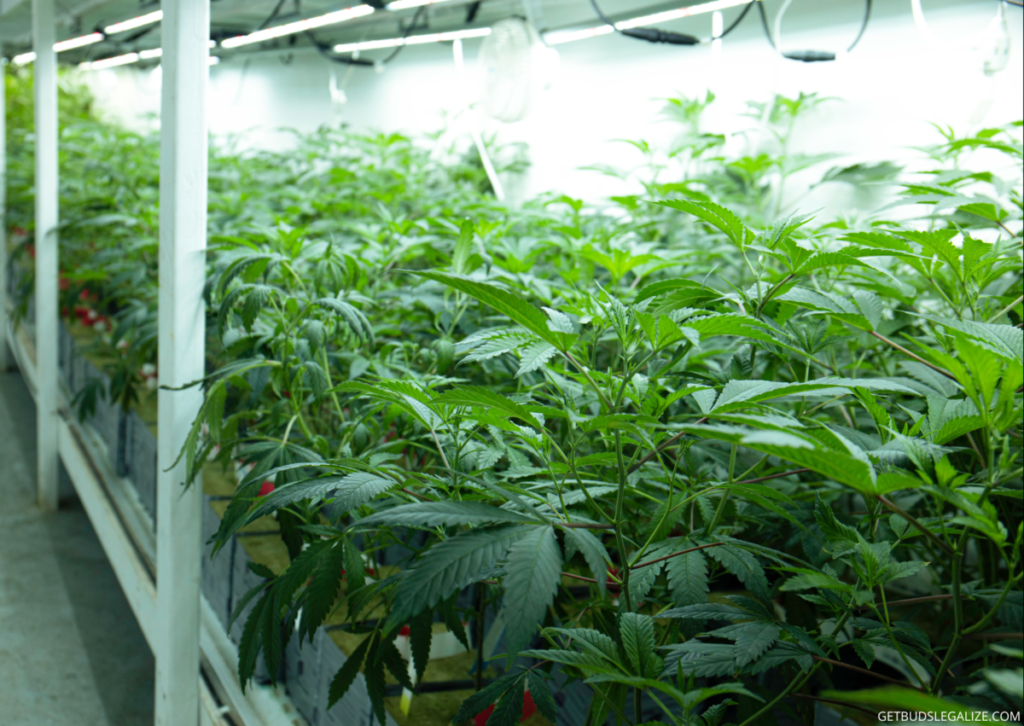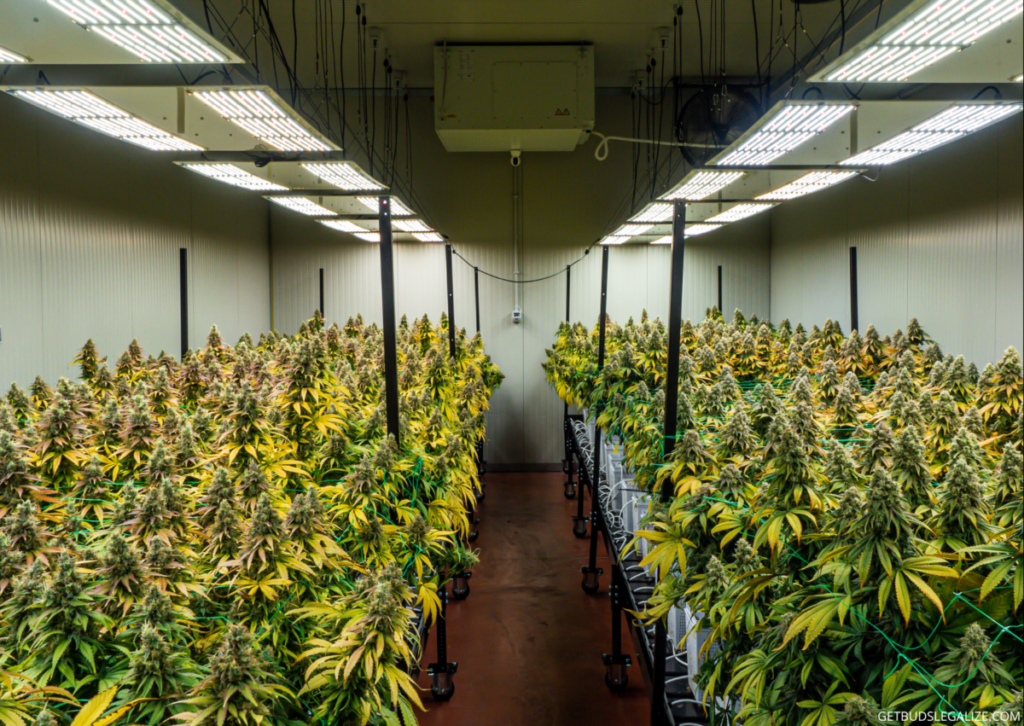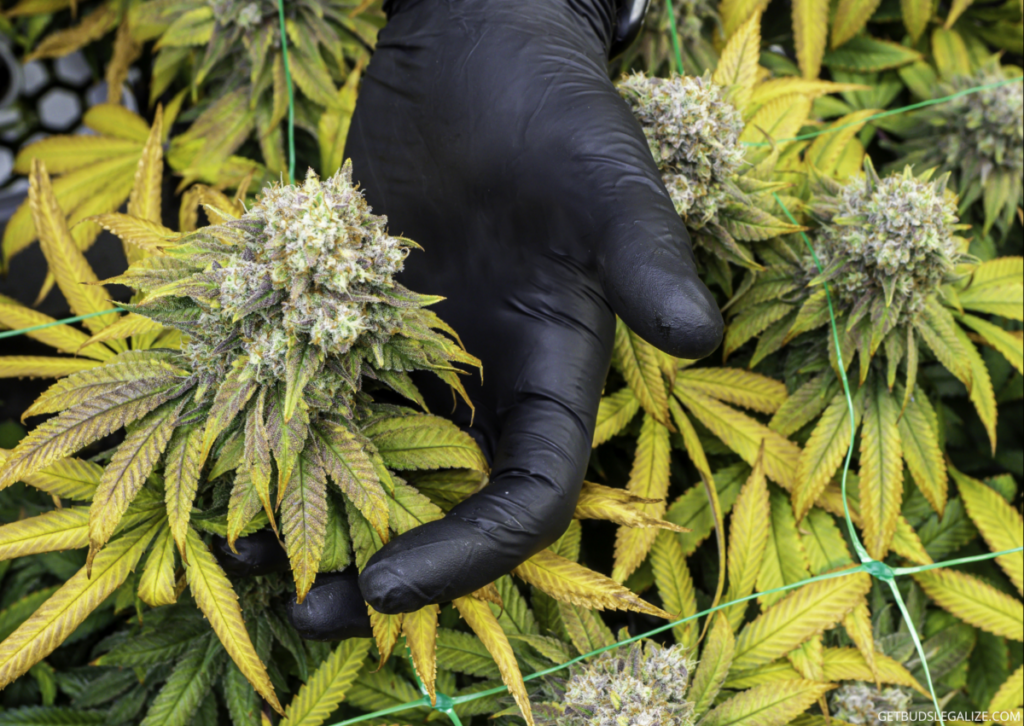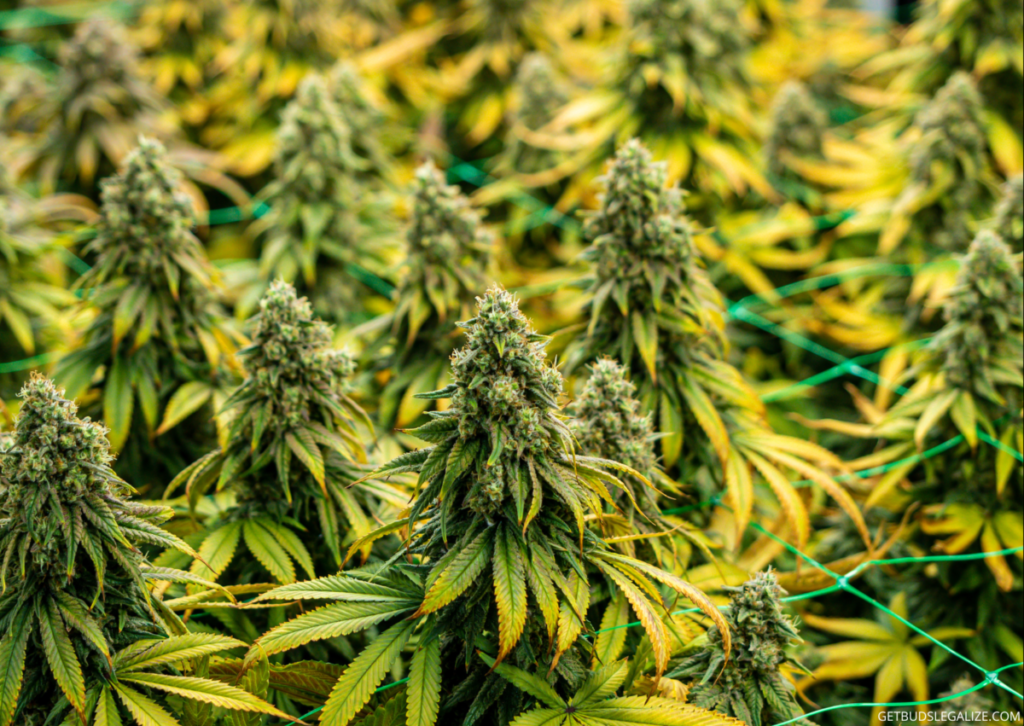Complete Guide to the Sea of Green Cannabis Growing Method (SOG)
If you are looking for an efficient and quick way to grow your plants, you might want to consider the Sea of Green cannabis growing technique. This is a low-stress training technique that involves growing many small plants in a small space, rather than a few large plants. The idea is to create a canopy of buds that covers the entire growing area, maximizing the light exposure and yield.
In this blog post, we will explain what SOG is, how it works, and what are the benefits and drawbacks of this method. We will also give you some tips on how to choose the best strains for SOG, how to set up your SOG system, and how to care for your plants during the different stages of growth. By the end of this post, you will have a clear understanding of how to use SOG to achieve your maximum yields ever.
What is SOG?
SOG stands for Sea of Green, a cultivation technique that consists of growing many small and compact plants in a small space. This method allows you to obtain a large and fast harvest, as the plants do not have to develop side branches and can concentrate on producing flowers.
When to Start Your Sea of Green Growing
The timing and method will depend on whether you are using seeds or clones.
If you are using feminized cannabis seeds, you will need to germinate them first and then plant them in small pots or cups. Many growers will begin bloom immediately or within a week after planting their seeds, as this will ensure that the plants stay small and uniform. However, some growers may prefer to give their seedlings a few weeks of vegetative growth before switching them to flowering.
If you are using clones, then you will need to allow a week or two for your clones to fully root before putting them under a 12/12 light cycle. This will give them some time to recover from the stress of cutting and transplanting. You can also use this time to select the best clones from your mother plant and discard any weak or unhealthy ones.
How Many Plants Do You Need for the SOG Growing Method?

The number of plants you need for the Sea of Green method depends on several factors such as:
- The size of your grow area: The more space you have, the more plants you can fit in it. However, you also need to consider the ventilation, humidity, temperature, and light distribution in your grow area, as these can affect the health and yield of your plants.
- The size of your pots: The smaller your pots are, the more plants you can squeeze in them. However, you also need to consider the root growth and water retention of your pots, as these can affect your plants’ nutrient uptake and oxygen availability.
- The strain you choose: Some strains are more suitable for SOG than others. Generally speaking, you want to choose strains that are short, compact, fast-flowering, Indica-dominant, or hybrid varieties that produce dense buds with high THC levels.
As a rule of thumb, you can use this formula to calculate how many plants you need for SOG:
- Number of plants = Grow area (in square feet) / Pot size (in gallons)
For example, if you have a 4×4 ft grow tent (16 sq ft) and use 2-gallon pots (0.25 sq ft each), you can fit 64 pots in it (16 / 0.25 = 64). Therefore, you need 64 plants for SOG.
What Is the Ideal Pot Size for SOG Growth?
The size of pots you use affects how many plants you can fit in your grow area, how often you need to water them, how much nutrients they consume, and how big they grow.
The ideal pot size for SOG is between 1 and 3 gallons, as this allows enough room for root development and water retention, but also limits the vegetative growth and encourages flowering.
If you use smaller pots than 1 gallon, you risk stunting your plants and reducing their yield potential.
If you use larger pots than 3 gallons, you waste space and resources and increase the risk of overwatering and nutrient lockout.
How Do You Choose Between Soil and Hydroponics for the Sea Of Green?
One of the most important decisions for growers who use the sea of green is whether to use soil or hydroponics. Both options have advantages and disadvantages, and the choice depends on several factors, such as budget, space, experience, and personal preference.
Soil is the traditional and natural way of growing cannabis, and it can provide a rich and complex environment for the roots. Soil can also buffer pH fluctuations and nutrient imbalances, making it more forgiving for beginners. However, soil can also pose some challenges for the SOG technique, such as pest infestations, fungal diseases, water retention, and slow growth.
Hydroponics is the technique of growing plants without soil, using a nutrient solution that circulates through a system of pipes, pumps, and containers. Hydroponics can offer faster growth, higher yields, and more control over the plant’s environment. However, hydroponics can also be more expensive, complicated, and risky than soil, as it requires more equipment, maintenance, and monitoring. Hydroponics can also be more prone to pH fluctuations, nutrient deficiencies, and system failures.
Ultimately, the choice between soil and hydroponics depends on the grower’s goals, resources, and skills. There is no definitive answer to this question, as both options can produce excellent results if done correctly. The best way to find out what works best for you is to experiment with both methods and compare the outcomes.
Sea of Green Cannabis Growing Method Step-by-step Guide

The Sea of Green grow method is not very complicated, but it does require some planning and preparation. Here are the main steps you need to follow to create your own SOG:
Step 1: Set up your SOG system
The first thing you need to do is to prepare your growing space. You will need a large and flat area with good ventilation and lighting. You can use a grow tent, a closet, or any other suitable space. The ideal size of your pots or containers is about 2 gallons (7.5 liters), as you don’t want your plants to grow too big or root-bound. You should also use a soilless medium such as coco coir or perlite for better drainage and aeration.
Step 2: Vegetative growth
The next step is to choose your cannabis seeds or clones. If you use feminized cannabis seeds, you can germinate them and plant them directly in your pots. Many growers will begin the flowering stage immediately or within a week after planting, as the plants will stretch and fill the space during the bloom phase. If you use clones, then you will need to allow a week or two for your clones to fully root before putting them under a 12/12 light cycle. Clones have the advantage of being genetically identical and having a shorter vegetative period.
Step 3: Training your cannabis plants
One of the most important aspects of SOG is to train your plants to grow vertically and produce one main cola each. This will ensure that all the buds receive equal light and air circulation and that there is no waste of energy or space. To achieve this, you need to remove the side branches and lower leaves of your plants as they grow. You can use scissors, pruning shears, or your fingers to do this. Be careful not to damage the main stem or the top bud site.
Step 4: Trimming your cannabis plants
Another way to improve your SOG results is to trim and remove any excess leaves that block light or airflow from reaching your buds. This will increase the quality and potency of your harvest and prevent mold and mildew from forming. You should do this gradually throughout the flowering stage, starting from the bottom of the plant and working your way up.
You should only remove leaves that are yellow, damaged, or completely shaded by other leaves. You should not remove too many leaves at once, as this can stress your plants and reduce their yield. A good rule of thumb is to remove no more than 20% of the leaves at any given time.
Step 5: Flowering Cannabis
The final step is to enjoy the flowering stage of your cannabis plants in SOG. Depending on the strain you choose, this can take anywhere from 6 to 12 weeks. You should monitor your plants closely during this time and look for signs of maturity, such as pistil color change, trichome development, and bud density.
You should also water and feed your plants regularly, but avoid overwatering or overfeeding them, as this can cause a nutrient burn or root rot. You should also check for any signs of pests or diseases and treat them accordingly.
When your plants are ready to harvest, you should cut them at the base of the stem and hang them upside down in a dark, dry, and well-ventilated area. You should then trim off any remaining leaves and cure your buds in glass jars for at least two weeks.
Can I Use Autoflower Seeds With the SOG?
Autoflowering marijuana plants automatically transition from vegetative to flowering growth regardless of the light cycle. They are usually ready to harvest in less than 10 weeks from seed.
Autoflower can be used for SOG, but they have some advantages and disadvantages compared to regular or feminized seeds.
Some advantages are:
- They are faster and easier to grow
- They do not require any change in the light cycle
- They are more resistant to stress and pests
- They can be grown all year round
Some disadvantages are:
- They have lower yields per plant
- They have less potency and flavor
- They have less genetic diversity
If You Decide to Use Autoflowering for the SOG, You Should Follow These Tips:
- Choose small or dwarf varieties that do not grow too tall
- Use smaller pots or containers than usual
- Start with more seeds than usual
- Do not top or train them too much
- Harvest them when they are ready
How Much Is the Sea of Green Yield per Plant?

The answer is not simple, because there are many factors that influence the final outcome, such as:
- The strain you grow: some strains are more suitable for SOG than others because they have a short flowering time, a compact structure, and a high bud-to-leaf ratio.
- The size of your plants: smaller plants tend to produce less yield than larger ones, but they also require less space and resources. You can control the size of your plants by limiting their veg growth and pruning them regularly.
- The number of plants: more plants mean more buds, but also more competition for light, nutrients, and air. You need to find the optimal number of plants per square ft for your setup and strain.
- The health of your plants: healthy plants produce more yield than sick or stressed ones. You need to provide your plants with optimal conditions of temperature, humidity, ventilation, lighting, watering, and feeding. You also need to prevent and treat any pests or diseases that may affect them.
- The quality of your plants: not all buds are created equal. Some buds are denser, bigger, more resinous, and more potent than others. The quality of your buds depends on the genetics of your strain, the environment of your grow room, and the techniques you use to enhance them.
However, as a general rule, you can expect about 0.5 to 1 gram per watt of light output from SOG method. For example, if you use a 600-watt grow light source for one square meter (3,3 ft) of space with 16 plants, you can expect about 300 to 600 grams (10 to 20 ounces) of dry buds.
What Are the Benefits and Drawbacks of SOG?
SOG has many benefits for growers who want to maximize their yields in a limited space and time. Some of these benefits are:
- Faster harvests: It allows you to harvest your plants in as little as 8-10 weeks from seed or clone, compared to 12-16 weeks for conventional methods.
- Higher yields: It can produce up to 1 gram of bud per watt of light per square foot, which is much higher than other methods that produce around 0.5 grams per watt per sq ft.
- More efficient use of space: You can fit more plants in a smaller area than other methods, which means you can grow more buds with less space.
- More efficient use of resources: It requires less water, nutrients, and electricity than other methods, as the plants have shorter lifespans and smaller root systems.
- Less maintenance: It requires less pruning, training, and pest control than other methods, as the plants have less foliage and are less prone to diseases and pests.
However, SOG also has some drawbacks that you should be aware of before trying it out. Some of these drawbacks are:
- Higher initial costs: SOG requires more seeds or clones than other methods, as well as more pots or containers, soil or growing medium, and lighting equipment.
- Higher legal risks: SOG involves growing more plants than other methods, which could increase your chances of getting caught or facing harsher penalties if cannabis cultivation is illegal in your area.
- Higher risk of mold and mildew: SOG creates a humid and crowded environment for the plants, which could lead to fungal infections and reduced quality of the buds.
As you can see, SOG has its pros and cons, and it is not a one-size-fits-all solution. You should consider your goals, budget, space, time, and legal situation before deciding to use this method.
What Are the Best Cannabis Strains Suitable for the Sea of Green Technique?

Not all strains are suitable for SOG. Some strains grow too tall or too bushy for this technique, while others do not respond well to stress or early flowering. Some characteristics that make a strain suitable for SOG are:
- Short and compact
- Fast-growing and early-flowering
- High-yielding
- Uniform growth
- Resistant to mold and pests
Some of the best strains that meet these criteria are:
- White Widow: This classic strain is known for its high potency, resin production, and balanced effects. It grows well in SOG due to its short stature, fast flowering time (8-9 weeks), and high yield (up to 600 g/m2). It also has good resistance to mold and pests.
- Northern Lights: This Indica dominant strain is one of the most popular and reliable strains of SOG. It has a short and bushy structure, a quick flowering time (6-8 weeks), and a high yield (up to 500 g/m2). It produces dense and resinous buds with a sweet and spicy aroma.
- Sour Diesel: This sativa-leaning strain is a cross between Chemdawg, Northern Lights, and Skunk #1. It has a medium to tall height, a moderate flowering time (9-10 weeks), and a high yield (up to 500 g/m2). It produces long and fluffy buds with a sour and diesel flavor and an energetic and uplifting effect.
- Super Skunk: This Indica-dominant strain is a cross between Skunk #1 and Afghani. It has a short and bushy structure, a fast flowering time (7-8 weeks), and a high yield (up to 600 g/m2). It produces thick and resinous buds with a pungent and skunky flavor and a powerful couch-locking effect.
- Girl Scout Cookies: This indica-heavy strain is a cross between OG Kush and Durban Poison. It has a medium height, a moderate flowering time (8-10 weeks), and a high yield (up to 500 g/m2). It produces dense and colorful buds with a sweet and earthy flavor and a balanced and potent effect.
- OG Kush: This legendary strain is a hybrid of Chemdawg, Lemon Thai, and Pakistani Kush. It has a medium height, a moderate flowering time (8-10 weeks), and a high yield (up to 500 g/m2). It produces dense and frosty buds with a piney and lemony flavor and a powerful and euphoric effect.
- Power Plant: This sativa-dominant strain is a descendant of South African landraces. It has a short height, a fast flowering time (7-8 weeks), and a high yield (up to 600 g/m2). It produces large and sticky buds with a woody and spicy flavor and a stimulating and uplifting effect.
- Mazar: This Indica-dominant strain is a cross between Afghani and Skunk #1. It has a short height, a fast flowering time (8-9 weeks), and a high yield (up to 550 g/m2). It produces compact and frosty buds with a sweet and earthy flavor and a relaxing and sedating effect.
- Bubba Island Kush: This Indica-dominant strain is a cross between Granddaddy Purple, OG Kush, and pre ‘98 Bubba Kush. It has a short height, a fast flowering time (7-8 weeks), and a high yield (up to 400 g/m2). It produces dense and purple buds with a fruity and
Basic Tips on How to Maximize Your Yields with SOG
If you want to maximize your yields with the SOG technique, make sure to follow some best practices to ensure a successful harvest, These include:
- Choosing the right strain: You should choose a strain that is suitable for SOG, such as indica or Indica-dominant hybrids that have a short flowering time and a compact structure.
- Choosing the right number of plants: You should aim for about 1 plant per square ft of space or about 9 plants per square meter. This will ensure optimal light penetration and airflow for the plants.
- Choosing the right pot size: You should use small pots or containers that can hold about 1 liter of soil or growing medium. This will limit the growth of the roots and encourage the plants to focus on producing buds.
- Choosing the right grow lights: You should use high-intensity discharge (HID) lights such as metal halide (MH) or high-pressure sodium (HPS) that can provide enough light for the plants.
- Choosing the right harvesting time: You should harvest your plants when they are about 12 inches tall and have developed enough trichomes on their buds. This will ensure maximum potency and yield.
Conclusion – Enjoy the sea of green cultivation
We hope this grow guide has provided you with some useful information on the sea of green cannabis growing technique. This technique involves growing many small plants in close proximity and harvesting them early before they start competing for light and space.
By doing so, you can maximize the yields and efficiency in a limited area and reduce the time between crops. However, SOG also requires careful planning, maintenance, and attention to detail. You need to choose the right strain, pot size, lighting schedule, and pruning method for your setup. If you follow these steps and avoid common mistakes, you can enjoy a successful SOG grow and harvest high-quality buds in a short time.
FAQs - Sea of Green Cannabis Growing Method
The main goal of this training technique is to create a uniform canopy of buds that receives an equal light distribution. To achieve this, you will need to prune and bend your plants regularly.
The first step is to top your plants when they have 3 or 4 nodes (sets of leaves). This will encourage them to grow more branches and form a bushy shape.
The second step is to remove any lower branches and leaves that are not receiving enough light or are blocking the airflow. This will improve the energy efficiency and health of your plants.
The third step is to bend or tie down any branches that are growing too high or too wide for the canopy. This will create more space for buds and prevent any light wastage.
The best time to switch your plants to flowering is when they reach a height of 10 to 15 cm. This usually happens after 2 or 3 weeks of veg growth. However, you can adjust this timing according to your strain and preference. Some growers prefer to switch their plants earlier or later, depending on how much stretch they expect from their strain.
The stretch is the amount of growth that occurs after switching to flowering, which can vary from 50% to 200% depending on the strain. You want to avoid having your plants grow too tall or too close to the light source, as this can cause problems such as heat stress or light burn.
The best way to harvest your plants is by cutting them at the base and hanging them upside down in a dark and dry place with good ventilation. You want to avoid trimming or manicuring your buds before drying them, as this can cause them to lose some of their potency and aroma. You can trim them after they are dry, removing any excess leaves and stems.
The drying process usually takes around 7 to 10 days, depending on the humidity and temperature of your environment. You can check if your buds are dry by snapping one of the stems and seeing if it breaks cleanly or bends.
Once your buds are dry, you can cure them in glass jars with airtight lids, opening them once a day for a few minutes to release any moisture and gases. The curing process usually takes around 2 to 4 weeks, but it can be longer if you want to improve the flavor and quality of your buds.
The SOG is best suited for growing marijuana indoors, as it gives you more control over the environment and the light cycle. However, you can also perform the SOG outdoors if you have a suitable location and climate.
You will need to follow the same steps for indoor growing, but you will have to adjust them according to the natural light cycle and weather conditions. You will also have to protect your plants from pests, predators, thieves, and law enforcement.
You will need to start your seeds or clones indoors in late winter or early spring, depending on your location. You will need to keep them in the vegetative stage until late spring or early summer when the days are long enough to induce flowering outdoors. Then you will need to transplant them outdoors in a sunny and discreet spot.
You will need to harvest your plants in late summer or early fall before the days get too short and cold. You will need to dry and cure your buds as usual.
Setting up your grow space for SOG is similar to setting up any other indoor grow room but with some differences in terms of space and layout. Here are some tips:
- Choose a suitable location for your grow space that is discreet, secure, and easy to access. It should have enough space for your pots, lights, ventilation system, and other equipment. You can use a spare room, a closet, a tent, or a cabinet.
- Install your lights above your pots and adjust them according to the height of your plants. You should aim for about 50 watts per square foot of canopy. Make sure you have enough clearance between the lights and the plants to avoid heat stress or light burn.
- Install your ventilation system to create negative pressure. This means that more air is going out than coming in, which prevents odors from escaping and fresh air from entering.
- Connect your exhaust fan to your carbon filter and ducting and place it near the top of your grow room where the hot air accumulates. Connect your intake fan or passive vents near the bottom where the cool air enters.
- Arrange your pots in a grid pattern with about one or two plants per square foot. This will allow you to fit more plants in less space and create a uniform canopy of buds that receives equal light exposure. You can use a trellis net or bamboo stakes to support your plants if they get too heavy or floppy.
Indica strains are more suitable for the SOG technique than sativas. Indicas are shorter, bushier, and more consistent in size and shape. They flower faster and produce denser buds that form a tight canopy under the light.
Sativas are taller, lankier, and more diverse in size and shape. They flower slower and produce looser buds that create gaps in the canopy. These traits lower the light efficiency and yield of the SOG method.
Some growers may choose to use sativa strains for their distinct effects and flavors. They can still succeed with the SOG technique with some adjustments.



















